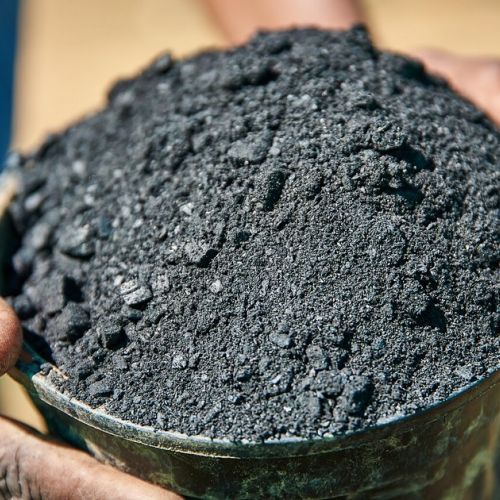While it is one of the oldest products in the world, biochar is attracting renewed interest among scientists and industry professionals. It is said to be capable of regenerating soils depleted by intensive agriculture, retaining water, and especially trapping CO2 as a carbon sink. But is it really a miracle solution for the environment? We propose to take stock of its characteristics, advantages, and disadvantages in 5 questions.
1- What is biochar?
Biochar is a word derived from the abbreviation of bio-charcoal. Its name literally means charcoal of biological origin.
More specifically, it is a vegetable charcoal obtained by pyrolysis of organic materials from various sources, such as crop residues, food waste, green waste, or by-products of the wood industry.
2- How is biochar made?
The main difference between biochar and simple charcoal lies in the manufacturing process of this product.
A pyrolysis oven must be used to transform about 4 tons of organic matter into 1 ton of this vegetable charcoal with amazing properties. During this process, the combustion of forest or agricultural residues at around 500°C and without oxygen carbonizes the biomass without burning it.
Thus, CO2 is not released into the atmosphere but is trapped in this organic matter, which appears in the form of flakes or small black grains. It is estimated that one ton of this vegetable charcoal can sequester between 2.5 and 3 tons of CO2 equivalent.
It should also be noted that the pyrolysis reaction of biomass produces an average of 30% biochar and 70% very polluting gases, which must be burned. In the end, the burned gases also have an advantage: they allow for the production of energy, which can partly be used to power the pyrolysis.
3- What are the environmental benefits of biochar?
Thanks to its ability to trap CO2 in a stable material over time, biochar is increasingly attracting the interest of scientists and industry professionals.
It allows for carbon sequestration and storage for hundreds of years, so much so that it is cited by IPCC experts as a negative emissions technology (or "carbon sink") that is promising in the fight against climate change.
And that's not the only environmental benefit of this material! It also has interesting applications for water decontamination and agriculture. Due to its porous structure, composed of micro-cavities, this plant-based charcoal has excellent filtration and decontamination capabilities, which can be used to make water potable or filter sludge from wastewater treatment plants.
Also because of its structure, it retains water and nutrients like a sponge. Thus, it helps to regenerate the most damaged soils and restore their fertility while using less chemical fertilizer.
4- How to use biochar in agriculture?
The agronomic properties of biochar can be utilized on large agricultural areas, as well as in vineyards and forests. Simply incorporate this plant-based charcoal into the soil to improve its structure and reduce its acidity, retain water at the roots of plants, and even combat certain pest insects!
Analyses conducted on fertile lands in the heart of the Amazon have revealed that the Amazonian Indians were already burying this type of plant-based charcoal in the soil over 2000 years ago, and that this practice has maintained the fertility of these plots to this day.
The interest in this material for local populations in the Global South is currently the subject of studies by Cirad, the French Agricultural Research Centre for International Development (see the link below).
The long-term goal would be to transform locally available agricultural waste into a veritable gold mine with multiple uses within a circular economy logic:
• restoration or improvement of agricultural land.
• energy production with an overall positive carbon balance.
• manufacturing activated charcoal filters to make water potable.
• carbon storage by incorporating a percentage of biochar into road asphalt.
5- What are the disadvantages of biochar?
Today, biochar production projects are multiplying in France and around the world. Unfortunately, this material, which appears to be a miracle solution for the environment, has the main drawback of its production cost. This explains why this very promising solution struggles to develop on a large scale, even though its benefits have been known for about fifteen years.
For now, this material has not yet found its economic model. Farmers cannot take advantage of its benefits for the soil because the price is a real barrier. This product sells for around €800 per ton in Europe.
To lower costs, some industrialists are considering developing large-scale production in tropical areas, where biomass is abundant, cheap, and so far underutilized.
Another approach would be to link the production of this charcoal to energy production for industrial sites. Indeed, pyrolysis produces biogas, which is an interesting renewable and carbon-neutral energy source for running factories.
As proof of the growing interest in this miraculous material, the Suez group is building a biochar plant in Canada in 2024. Large groups see it as a technology with a bright future, which should help this emerging technology find an economic model.

